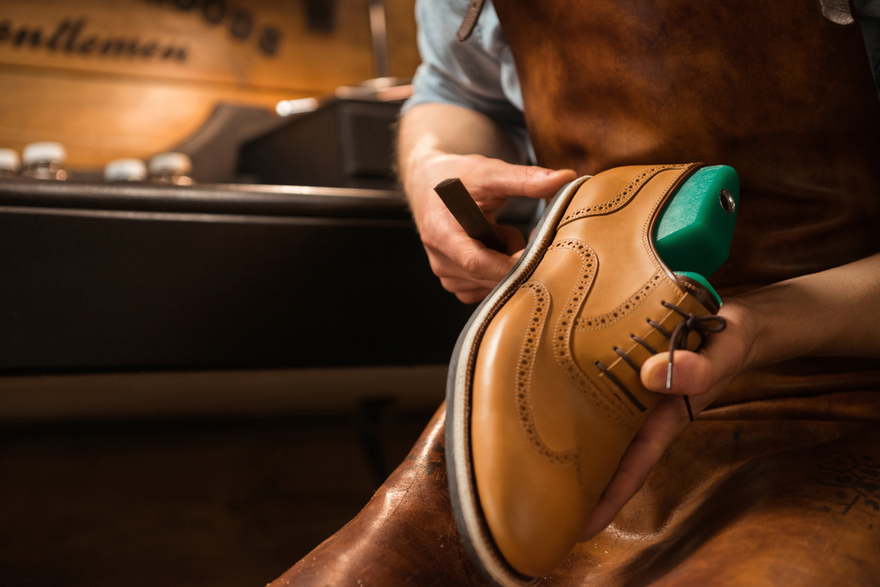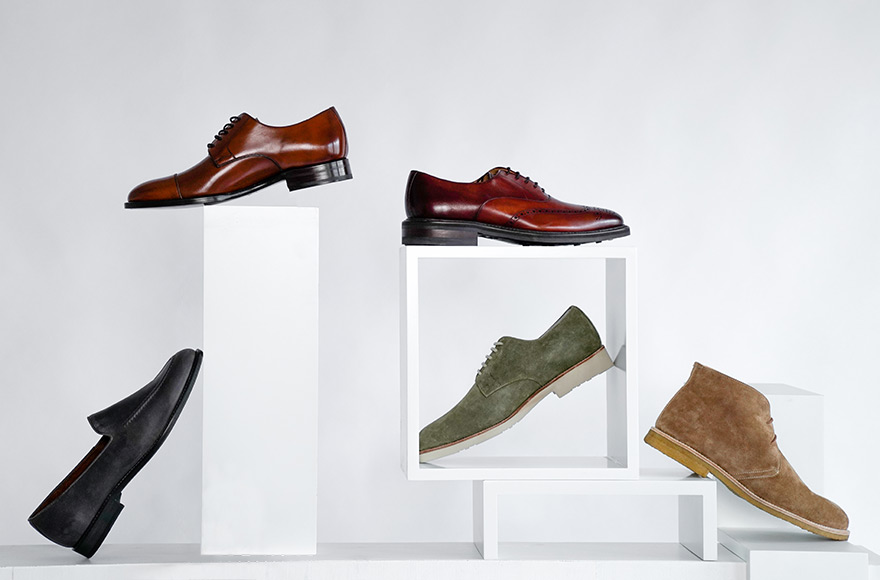 If your high-quality shoes become damaged or look a bit battered, it is worthwhile to bring them to a cobbler. He can truly work wonders, and shoe repair spares you the great expense of having to purchase an entirely new pair.
If your high-quality shoes become damaged or look a bit battered, it is worthwhile to bring them to a cobbler. He can truly work wonders, and shoe repair spares you the great expense of having to purchase an entirely new pair.
Even the highest quality shoes eventually require repair—after all, they are inevitably subjected to everyday wear and tear. After a number of years, the heel and insole may have worn down, and the toe of the shoe may be damaged—nevertheless, you still do not need relegate your premium footwear to the scrap heap. As long as the counter has not buckled, and the seams and the leather have not cracked, a visit to a shoemaker can work real wonders. Bringing your shoes to a cobbler is also cost-effective, since you are spared the cost of having to buy an entirely new pair of shoes—a far greater expense than shoe repair.
Not all shoemakers are equipped for necessary repairs
That being said, not all of your local shoe repair services are worth a visit. Most of these places specialize in cheap, glued-together, mass-produced products, and are therefore unfamiliar with the shoe repair methods necessary for Goodyear-welted men's shoes. It is worthwhile to compare shoe repair providers—take a look online. Although this might take some time, it will pay off in the end, since truly professional shoe repairs are significantly higher and more consistent in quality.

Recognizing necessary shoe repairs
Those who regularly and thoroughly clean their shoes greatly postpone the need for shoe repairs in doing so. Intensive shoe care also carries a further advantage: you will recognize problems requiring repair earlier on, which will save you money in turn.
If you discover undone quilting seams along the shaft, you should quickly bring your shoes to a cobbler to have the seams re-stitched before they cause further damage. You can take care of protruding fibre ends yourself—simply burn them off with a a small flame.
Worn out or ripped heel lining is a more severe issue. This can cause an uncomfortable walking experience, as can a damaged insole—in both cases, you should bring your shoes to a cobbler for repair.
The toe of the shoe desperately requires repair when it has been worn down by two-thirds. The same applies to insoles that have worn down to a thickness of five to six millimetres.
If you own men's shoes with a rubber sole, you should take care that there is no gap between the rubber sole and the midsole. If this occurs, and the shoe is not brought to an expert for repair, then the glued-on sole will quickly fall off the shoe again.

What to do in the case of…
…scratches in the shoe upper?
Even deep scratches in the shoe upper do not mean the end of the world. Trowel off the groove with hard wax, then treat the scratch with shoe cream that matches the upper in colour. This allows the scratch to quickly fade away.

…shoes that squeeze or are too tight?
Do your new men's shoes still squeeze your feet at certain points, even though you have taken time to break the shoes in? No problem. A cobbler can target these spots, softening and broadening them. If the shoe is too narrow, it can be stretched, within reason. But bear in mind: purchasing shoes in the proper width lets you easily sidestep this problem.
Cobblers use chemicals to aid the stretching process. As a result, applying alcohol to the stretched spots is absolutely harmless. If a greater degree of stretching is desired, the cobbler uses so-called leather stretchers, and softens the spots in question with anionic emulsifiers and fats. You can also do your part to stretch your shoes by means of an old trick: simply fill your shoes with warm water, let it absorb for a minute, pour it out, and then wear the shoes until they have fully dried.
…a toe cap and counter that squeeze your feet?
When the toe cap of your shoes squeezes the backs of your toes, this can cause pain and, in the worst-case scenario, even lead to bleeding. You should therefore take care when buying your shoes to ensure that they fit perfectly. Although a cobbler can sightly elevate the toe cap, there is not much he can do when it comes to this part of a men's shoe. The only way he can drastically alter the toe cap is by sending the shoe back to the manufacturer, who can then repair the damaged toe cap with the help of the original last.
When it comes to a squeezing counter, on the other hand, a cobbler can work real wonders. He can quickly eliminate the problem with a pounding treatment—he either carefully pounds on the counter with a hammer, or works it with his thumbs.
…creaky or squeaky shoes?
Sometimes, as you walk, two leather surfaces on your shoes rub against one another, producing an unmistakeable noise. If you wish to avoid involuntarily drawing attention to yourself when this occurs, you should turn to a professional shoemaker.
Usually, this issue is caused by the detachment of the adhesive agent between the welt and the insole, which in turn causes the double seam to loosen. As a result, the two parts of the shoe are no longer as tightly connected to one another as intended, and consequently create a noise when they rub together. Squeaking can also be caused by a loosening of the filler mass (if it is made of firm cork board) and/or an insufficiently fastened metal sheet. If this is the case, the shoemaker needs to undo the shoe's double seam to seek the source of the problem.
Additional Elements of Shoe Care
Quality Shoe-Care Products at Shoepassion.com
Various usages ★ High quality ★ Fair & sustainably produced in Europe ★ Exellent value for money













